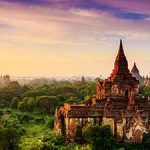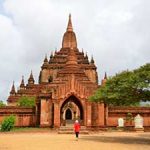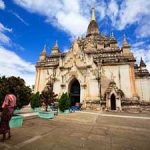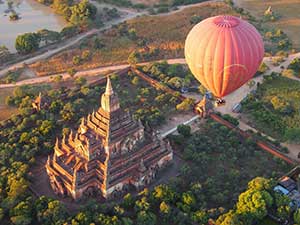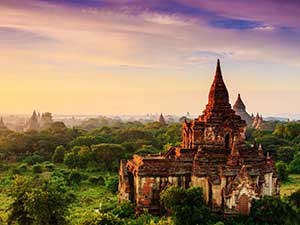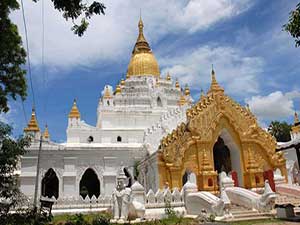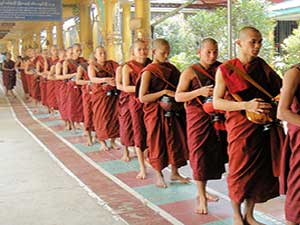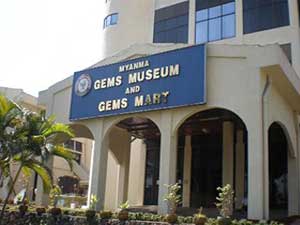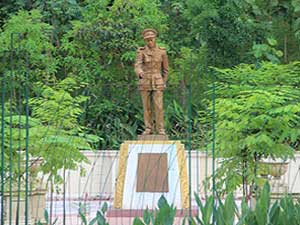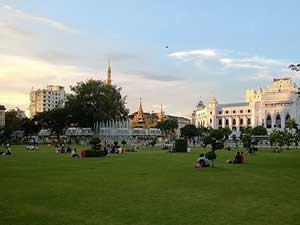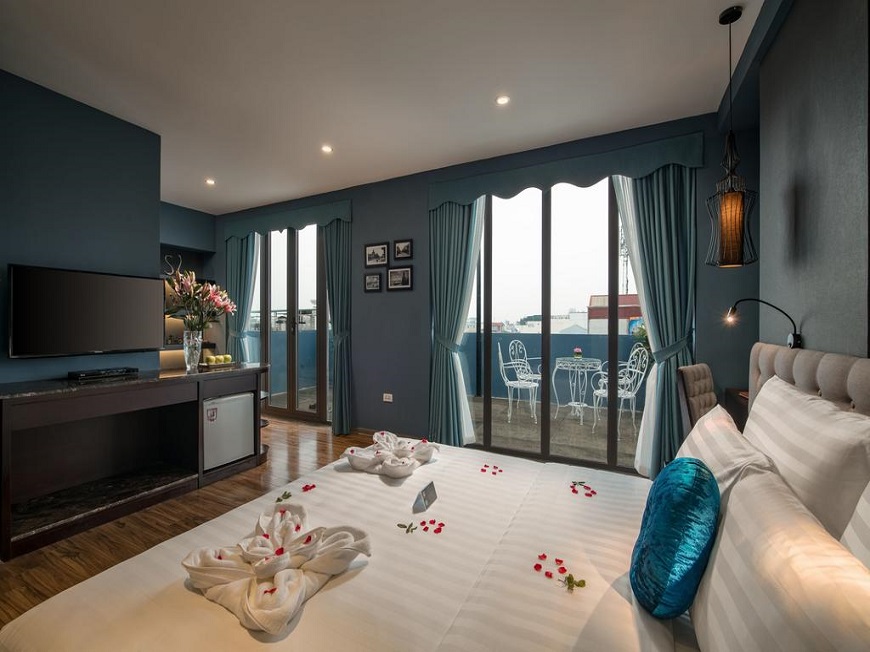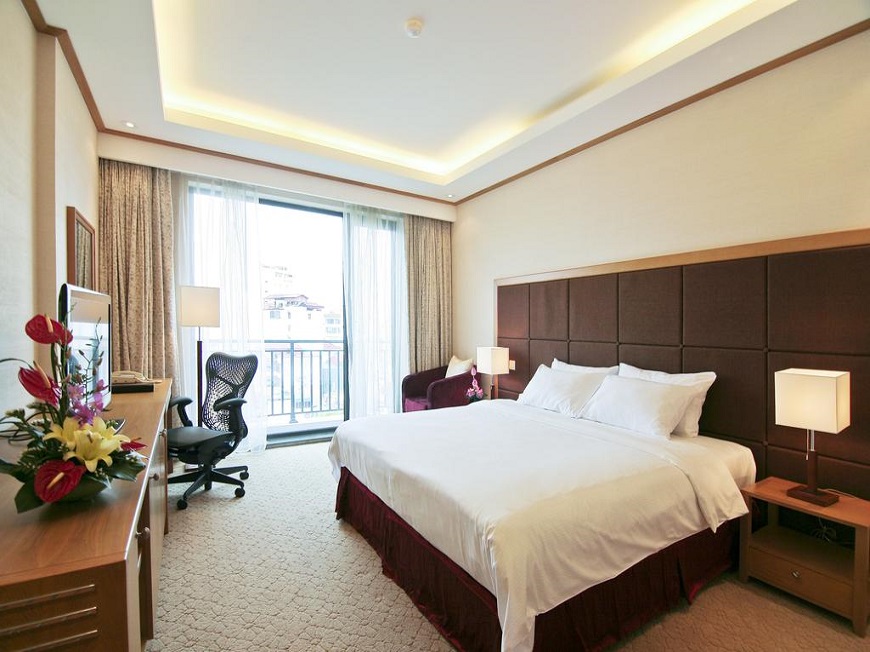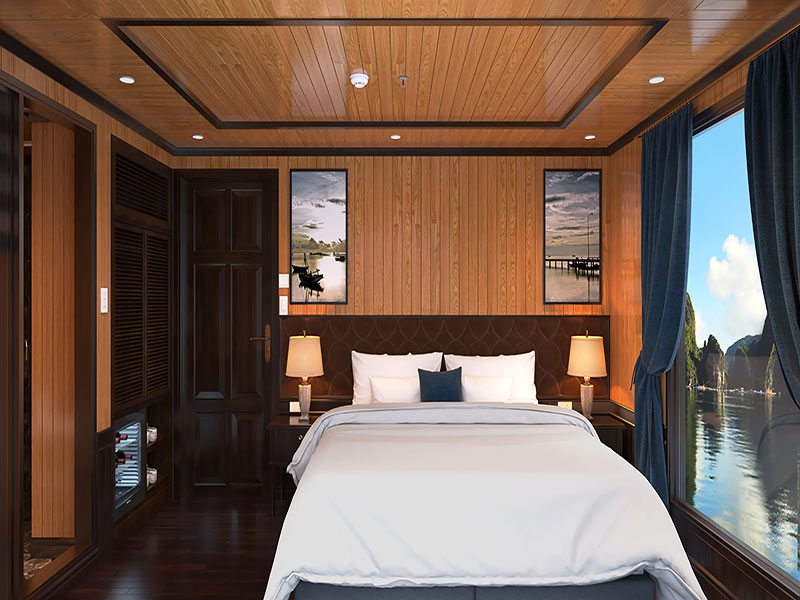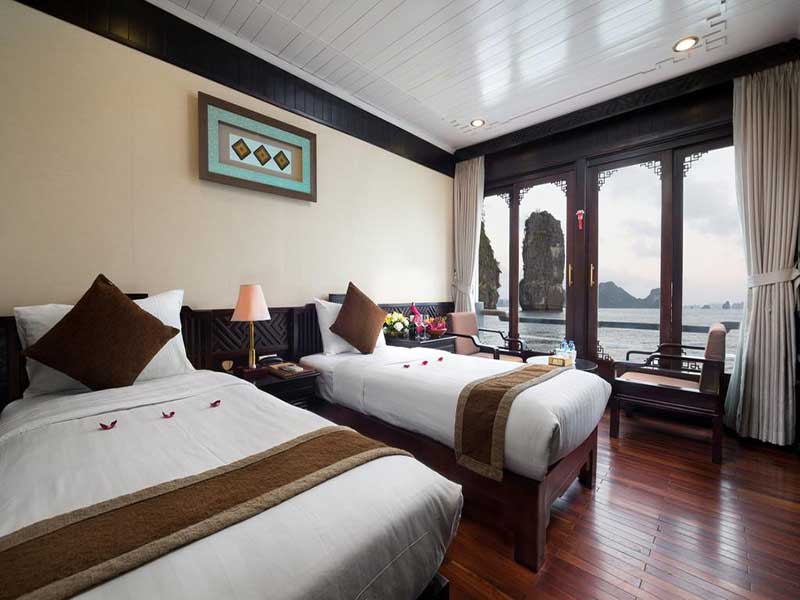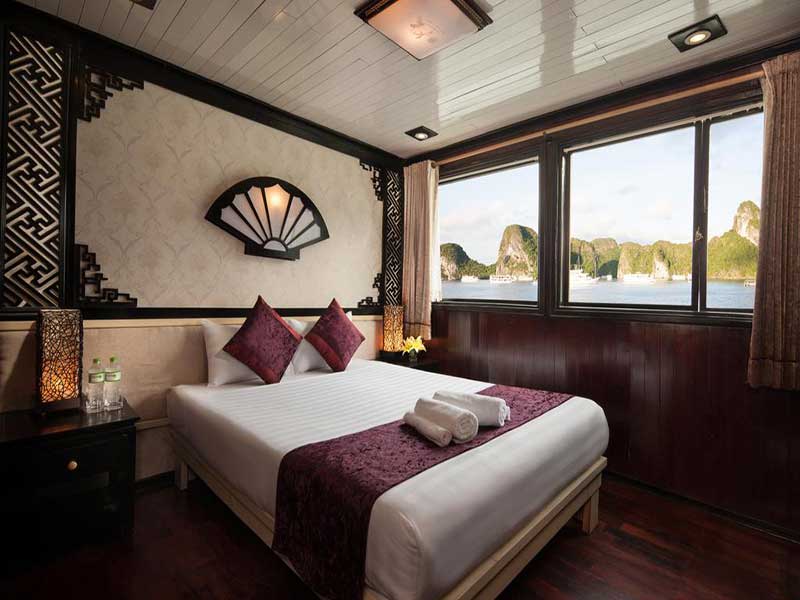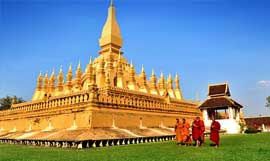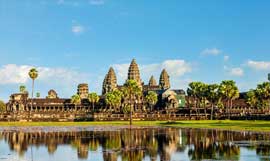Dhammayazika pagoda is a pagoda located in central Bagan, region of Myanmar. According to the documents, this pagoda was built in 1197, by King Narapatisithu. After that, this pagoda was renovated and restore in 1990s. However, because of this renovation, some of the solitary architecture of this pagoda has not been preserved until today. This is one of the various pagoda voted in the list of the world’s most beautiful gold pagoda.
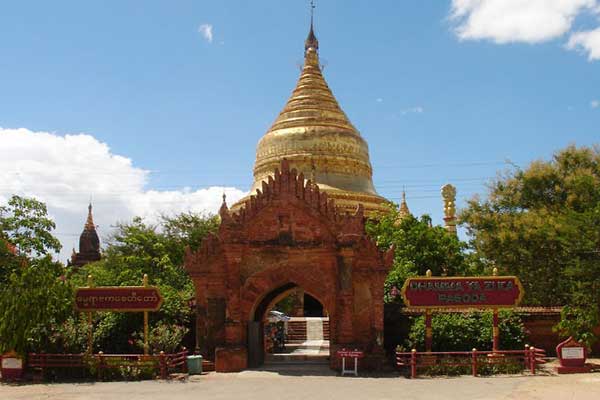
Just like the architecture of many other temples and pagodas, the Dhammayazika pagoda has a main door for visitors to come in and out. This pagoda has been famous for its 5-sided footprint. Each of the 5 sides reflecting one of the arches: Gautama Buddha, the future Buddha, his predecessors, and Metteyya.
On the walls inside the temple are fine carvings, depicting the thoughts and views, beliefs in the spiritual life of the Buddhist country. Dhammayazika or Dhammarajika means “Pertaining the King of Law”.
The Dhammayazika pagoda was made of brick, and this pagoda also contained smaller architectural complexes, which are five shrines. The unique feature in the architecture of the this pagoda is due to its pentagonal base. In each corner of the 4 corners, there is a Buddha statue.
This is considered one of the destinations not to be missed, especially for the tourists looking to admire and watch the sunrise and sunset in Bagan. In the romantic setting of sunrise and sunset, you will feel a completely different Bagan.
All the architectural features have made the Dhammayazika pagoda become a pagoda having a striking beauty, and become an attractive tourist attraction.
To come to the Dhammayazika pagoda, you can hire a taxi or drive by your own car to reach the Bagan-Chauk Road, before coming to Kakay St. and New Bagan. Next, you go to the East Phwa Saw village until you see the Dhammayazika pagoda.
Explore other famous Temples, Pagodas in Bagan: Htilominlo Temple; Ananda Temple; Shwezigon pagoda; Dhammayangyi Temple; Thatbyinnyu temple; Gawdawpalin temple; Shwesandaw Pagoda; Sulamani Temple; Shwegugyi Temple

